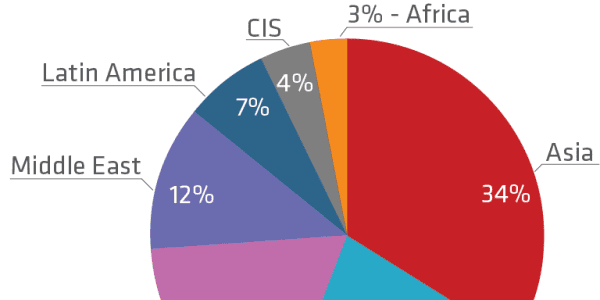With India set to welcome at least two new airlines this year, the country's turbulent aviation sector may be on the brink of a bitter war that will ultimately result in consolidation over the next two years, say analysts.
India's aviation sector, whilst promising huge growth potential due to the country's growing middle class and low air travel penetration rates, presents a tougher operating environment than most other markets. From intense price competition to exorbitant operating costs owing to high airport and fuel taxes, carriers have been locked in a tenacious battle for survival, with budget operator IndiGo the country's only profitable airline.
Now, the entrance of two new players – Singapore Airlines' (SIA) full-service airline joint venture with Tata Group and AirAsia's low-cost carrier joint venture also with the Indian conglomerate – both of which are expected to start flying later this year, is set to further turn up the heat on competition.
"We expect a full-fledged war in the winter of 2014 with the arrival of new players, presuming they get their operator permits by then," Amber Dubey, partner and head, Aerospace and Defense at global consultancy KPMG told CNBC.
The market will become a "true battlefield" in terms of quality services, fares and connectivity between second- and third-tier cities, said Shabori Das, analyst at Euromonitor. On the other hand, SIA and Air Asia's foray into the market will undoubtedly reinforce the attractiveness of the Indian market for foreign investors, she added.
(Read more: SingaporeAirlines-Tata Indian joint venture orders Airbus A320s)
Another element of competition will arise from the government's recent decision to superjumbos flying on routes to India, which enables carriers such as Singapore Airlines, Lufthansa and Emirates to fly the aircraft into the world's second-most populous nation.
The aircraft, which can carry more than 800 passengers in a single-class layout, had been banned on concerns that foreign airlines would dominate the market for international travel.
"Whenever a market player introduces a strategic move that brings down costs and improves efficiency, it puts pressure on other players," Dubey said.
"Some Indian carriers may counter by introducing their own A380s or by modifying their route network. Some Indian carriers may enter into business alliances, code shares or equity tie-ups with Emirates and Lufthansa to avoid bloodletting on key routes," he added.
Survival of the fittest
Recent efforts to liberalize the country's airline sector, in particular the government's decision to allow foreign airlines to buy a 49 percent stake in domestic carriers in 2012 – will drive a shakeout of the aviation sector over the coming years, say experts.
"With new airlines coming in and existing airlines being financially in dire straits – everyone is vulnerable, except IndiGo," said Kapil Kaul, CEO, South Asia at the Centre for Asia Pacific Aviation (CAPA).
IndiGo, the country's largest airline by passengers carried, reported a six-fold profit increase to INR787 crore ($125 million) in the year to March 2013, driven by capacity expansion and cost controls. India's overall airline industry, by contrast, is estimated to have lost around $1.65 billion, according to CAPA.
(Read more: The Middle East: The new aviation hub?)
"Over the next 18-24 months we anticipate consolidation in the sector. We don't expect more than four strong pan-India carriers. The others will operate as niche players or collaborate with the larger players," Dubey of KPMG added.
India currently has one state-owned airline – Air India – and six major private airline groups - IndiGo, Jet Airways, SpiceJet and GoAir - including the two new joint ventures, SIA-Tata and AirAsia India.
Shabori of Euromonitor says the next two years will be a critical period for determining whether existing companies will take the route of mergers of exits to survive mounting losses.
"As the government makes provisions such as allowing direct import of air turbine fuel and decreasing custom duty on the same in the last 2 years, the aviation companies might continue to work towards cutting losses," she said.
(Read more: AirAsia ready to take on India challenge: CEO)
"However, if the current challenges do not improve, then perhaps by 2015-2016 we could see some possible mergers or exits," she added.
—By CNBC's Ansuya Harjani. Follow her on Twitter:@Ansuya_H





